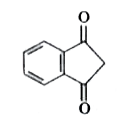Which equilibrium can be described as an acid base reaction using the Lewis acid-base definition but not using the Bronsted-Lowery definition?
2NH3+H2SO4⇔2NH+4+SO2−4
NH3+CH3COOH⇔NH+4+CH3COO−
H2O+CH3COOH⇔H3O+CH3COO−
[Cu(H2O)2+4+4NH3⇔[Cu(NH3)4]2++4H2O
The correct Answer is:D
To solve the question, we need to identify an equilibrium that can be classified as an acid-base reaction according to the Lewis definition but not according to the Bronsted-Lowry definition.
1. Understand the Definitions:
- Bronsted-Lowry Definition: An acid is a substance that donates a proton (H⁺), and a base is a substance that accepts a proton.
- Lewis Definition: An acid is a substance that accepts a lone pair of electrons, and a base is a substance that donates a lone pair of electrons.
2. Analyze the Options:
- We need to evaluate each option to see if it fits the criteria of being a Lewis acid-base reaction but not a Bronsted-Lowry reaction.
3. Option 1: NH₃ + H₂SO₄
- NH₃ accepts a proton (H⁺) from H₂SO₄, making NH₃ a Bronsted base and H₂SO₄ a Bronsted acid. This reaction fits both definitions.
4. Option 2: NH₃ + CH₃COOH
- NH₃ accepts a proton from CH₃COOH, making NH₃ a Bronsted base and CH₃COOH a Bronsted acid. This reaction fits both definitions.
5. Option 3: H₂O + CH₃COOH
- H₂O accepts a proton from CH₃COOH, making H₂O a Bronsted base and CH₃COOH a Bronsted acid. This reaction fits both definitions.
6. Option 4: Cu²⁺ + 4 NH₃
- In this case, NH₃ donates a lone pair of electrons to Cu²⁺. Here, NH₃ acts as a Lewis base, and Cu²⁺ acts as a Lewis acid. There is no transfer of protons involved, which means it does not fit the Bronsted-Lowry definition.
7. Conclusion:
- The only reaction that can be classified as an acid-base reaction using the Lewis definition but not the Bronsted-Lowry definition is Option 4: Cu²⁺ + 4 NH₃.
Final Answer:
The equilibrium that can be described as an acid-base reaction using the Lewis acid-base definition but not using the Bronsted-Lowry definition is Option 4: Cu²⁺ + 4 NH₃.
- Bronsted-Lowry Definition: An acid is a substance that donates a proton (H⁺), and a base is a substance that accepts a proton.
- Lewis Definition: An acid is a substance that accepts a lone pair of electrons, and a base is a substance that donates a lone pair of electrons.
- We need to evaluate each option to see if it fits the criteria of being a Lewis acid-base reaction but not a Bronsted-Lowry reaction.
- NH₃ accepts a proton (H⁺) from H₂SO₄, making NH₃ a Bronsted base and H₂SO₄ a Bronsted acid. This reaction fits both definitions.
- NH₃ accepts a proton from CH₃COOH, making NH₃ a Bronsted base and CH₃COOH a Bronsted acid. This reaction fits both definitions.
- H₂O accepts a proton from CH₃COOH, making H₂O a Bronsted base and CH₃COOH a Bronsted acid. This reaction fits both definitions.
- In this case, NH₃ donates a lone pair of electrons to Cu²⁺. Here, NH₃ acts as a Lewis base, and Cu²⁺ acts as a Lewis acid. There is no transfer of protons involved, which means it does not fit the Bronsted-Lowry definition.
- The only reaction that can be classified as an acid-base reaction using the Lewis definition but not the Bronsted-Lowry definition is Option 4: Cu²⁺ + 4 NH₃.
The equilibrium that can be described as an acid-base reaction using the Lewis acid-base definition but not using the Bronsted-Lowry definition is Option 4: Cu²⁺ + 4 NH₃.
Topper's Solved these Questions
- EQUILIBRIUM Book:ICSEChapter:EQUILIBRIUM Exercise:TRUE OR FALSE TYPE QUESTION
Explore 22 Videos
- EQUILIBRIUM Book:ICSEChapter:EQUILIBRIUM Exercise:FILL IN THE BLANKS TYPE QUESTIONS
Explore 34 Videos
- EQUILIBRIUM Book:ICSEChapter:EQUILIBRIUM Exercise:ESSAY (LONG ANSWER) TYPE QUESTIONS
Explore 17 Videos
- ENVIRONMENTAL CHEMISTRY Book:ICSEChapter:ENVIRONMENTAL CHEMISTRY Exercise:NCERT TEXT-BOOK EXERCISE
Explore 20 Videos
- HYDROCARBONS Book:ICSEChapter:HYDROCARBONS Exercise:NCERT TEXT-BOOK EXERCISES
Explore 46 Videos
Similar Questions
Knowledge Check
Amino acids undergo internal acid base reaction to form:
Aan amideBa lactumCzwitter ionDa peptideWhich of the following compounds exhibit acid base reaction with NaOH?
A B
B C
C D
D
Which of the following compounds will give acid base reaction with RMgX?
ACH3−O∣∣C−ClBH2SCH−O∣∣C−O−HD
Which of the following species acts as a Lewis acid and also as a Lewis base ?
View SolutionWhich of the following is possible acid base reaction?
View SolutionDiscuss the various types of acid-base titrations using indicators.
View SolutionWhich of the following can act as a lewis acid ?
View SolutionWhich of the following species can be formed in acid-base reactions as Bronsted base as well as Bronsted acids?
View Solution
